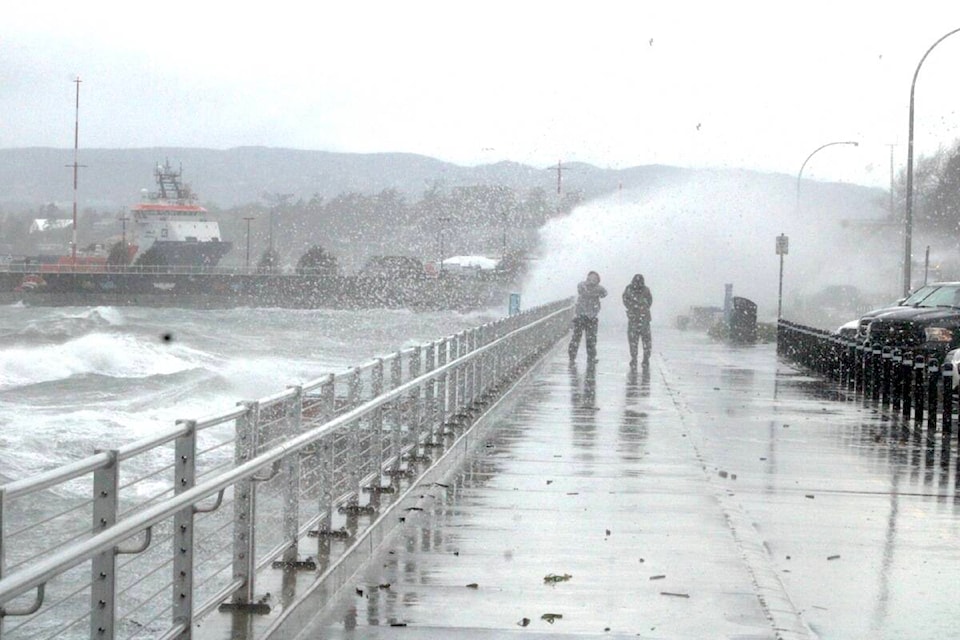Without deep cuts to greenhouse gas (GHG) emissions, the Capital Regional District is projected to face hotter, longer summer heat waves and more extreme rain events by the 2050s.
The University of Victoria-based Pacific Climate Impacts Consortium (PCIC) used the most up-to-date climate modelling data to compile a report for the CRD on how its climate will change by mid-century and beyond.
Creating safe and resilient communities relies on understanding the local manifestations of climate change, the climate projections report said.
PCIC found those manifestations in the Capital Region by 2050 will be marked by hotter summers with more extreme heat days and heat waves, a longer growing season but one that will see less rain amid prolonged droughts and extreme rainfall events becoming wetter.
“The projected warming for the capital region will have implications for regional ecosystems, watersheds, agriculture and horticulture, housing, energy demand, infrastructure and community health and safety,” the report states. It also notes extreme weather events are already negatively impacting human health and well-being in the region.
The modelling shows extreme temperatures getting hotter locally, with the report saying it’s clear residents will need to adapt to heat waves increasing in length, intensity and frequency by mid-century.
Historical temperature data shows multi-day episodes of extreme heat were rare in the region between 1980 and 2010.
But under the scenario where emissions remain high, heat wave events in the CRD are projected to increase in length in the future, approaching nine consecutive days or more by the 2080s. The region recorded one or no heat waves – where the daily high peaked around 30 C – annually over the 30-year period beginning in 1980, but could have up to five per year by 2050.
The region’s past – defined as 1980 to 2010 in the report – typically saw 12 days a year where the daily high topped 25 C. The number of annual days exceeding 25 C is expected to triple by the 2050s. The projected warming will create greater demand for cooling across the region as the report noted heat-related illnesses and deaths are expected to rise by 2050, with those risks heightened for the CRD’s growing population of older adults. PCIC notes Greater Victoria’s most populated areas have the highest exposure to heat-related impacts due to urban heat island effect.
South Island homes and buildings have relied on cool summer nights in the past, but the report says those run the risk of overheating in the future as more days are forecast to have overnight temperatures staying above 16 C.
Changing temperatures will cause seasonal shifts by 2050 as spring starts earlier and summer extends later. More warming will also reinforce the region’s precipitation trends as summer becomes dryer as the rest of the year gets wetter.
Annual precipitation is expected to increase four per cent by 2050 and 11 per cent by the 2080s. Much of the rainfall in the colder months will occur during extreme events, with very wet days becoming wetter and winter rainfall rising 25 per cent by mid-century, the report said.
With more extreme rain events projected, the region can expect its aging and undersized local infrastructure to continue to be overwhelmed, the report warns, adding intense rains may cause creeks to overflow, runoff to intensify and increase the chance of flooding in low-lying areas.
The summer months, in contrast, will see longer dry spells and a 15 per cent drop in total rainfall over the next 30 years. The heightened risk of summer and fall droughts will come as higher heat intensifies water demand from residents trying to stay cool and hydrated, the report said.
Longer summer-like conditions will also expand Greater Victoria’s growing season by 2050. However, PCIC found: longer droughts will create uncertainty for farmers; pollinators emerging at inopportune times due to warmer temperatures could impact crop yields; there could be less water available for irrigation; and the heat may create favourable conditions for invasive species and plant diseases. More intense fall rains increasing the risk of flooding could also impact harvests, the report added.
The regional impacts of climate change are expected to persist and intensify over the coming decades based on current global GHG trajectories, according to the report. It added the speed and scale of climate change could threaten local species’ ability to adapt, which could alter the region’s ecological relationships and landscapes.
“Collective efforts to reduce emissions and thereby slow the rate of global warming will be necessary to lessen the severity of these impacts,” the report states, adding adapting to the future climate conditions will be equally important.
Those adaptive actions can also support thriving communities and economies for generations to come, the report said. It highlights the need for actions like safeguarding infrastructure from extreme weather, protecting natural ecosystems, making food systems more resilient and being more efficient with energy and water use.
The report said every $1 spent on adaptation today translates to up to $15 returned in future years through direct and indirect benefits.
READ: Growing B.C. effort wants fossil fuel companies to pay for climate impacts



